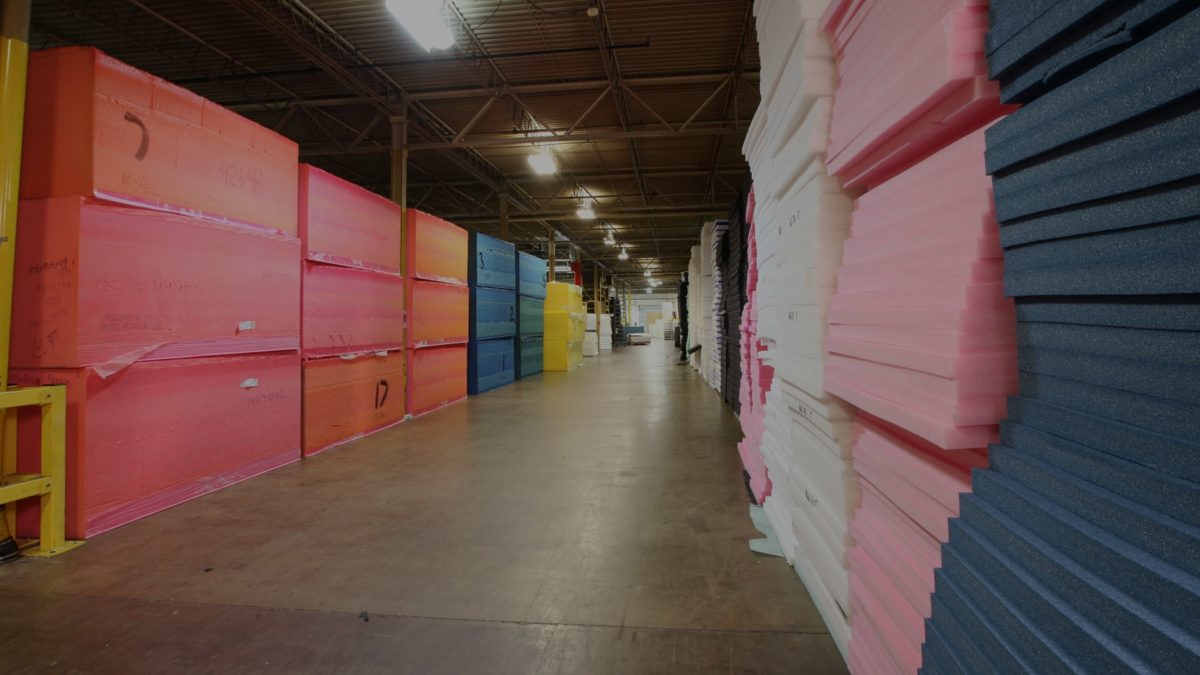Foam is integral to the cold supply chain. It’s used to insulate everything from pharmaceuticals to food and other perishables. While there are many foam types suitable for cold chain packaging and shipping, not all of them are created equal. Foam packaging options can range in price, weight, degrees of insulation, and various other properties. Choosing the right packaging foam for your cold chain products will impact the costs of shipping, the temperatures they can be stored and shipped in, how long they can be exposed to those temperatures, and much more.
When choosing your cold chain packaging and shipping materials, it helps to understand these foam options.
Expanded Polystyrene
Expanded polystyrene (EPS) foam is a lightweight, low-density foam that is cost effective. It can be molded into custom shapes that fit any product or container and provides a modest R-value, depending on the density and thickness of the piece of foam. EPS can provide ample protection for cold chain shipping, depending on external temperatures, but it’s not generally ideal for longer range shipments. The primary benefits of choosing this foam are its low cost and weight, which can significantly reduce shipping costs.
Expanded Polyethylene and Polypropylene
Expanded polyethylene (EPE) is a lightweight and flexible foam. It’s a closed cell foam that is made from small plastic beads that are expanded and then shaped into planks for fabrication or molded into various shapes. EPE comes in a variety of different densities. Because the material has a very low thermal conductivity, it acts as a strong insulator against heat. This makes EPE ideal for insulating cold chain products as its R-value is often high.
Expanded polypropylene EPP is also a closed cell bead foam that is an effective insulator. It is comparable to EPE, but slightly more difficult to fabricate into custom shapes. Both EPE and EPP offer ideal impact and shock absorption, chemical resistance, and a high strength to weight ratio.
If you are looking for a similar foam option for a light duty cold chain application, polyethylene plank is both tear and moisture resistant along with having good insulating properties. Foam planks can also be bonded to themselves and corrugated boxes, making the material a good, flexible packaging and cushioning solution.
What to Consider When Choosing a Foam
There are many variables to consider when choosing a foam for your temperature-controlled products:
- The temperature range that must be maintained
- The expected temperature range of the transit environment
- How long the products will be in transit
- Other transit conditions (including vibrations, etc.)
- Industry regulations on products and shipping
- Whether the packaging will be reused
- Budget limitations
- What refrigerants will be used within the packaging
Balancing Costs
Remember that the higher the R-value on a piece of foam, the less of it that can be used to provide the needed thermal regulation. It also allows you to use a smaller amount of refrigerant within the package. All of this reduces the dimensional weight of a package, which in turn reduces shipping costs. It’s important to strike a balance between these factors and choose a foam type that fits your products and their shipping boxes or containers.
Custom Foam for Unique Products
At Amcon, we can help you select the best type of foam for your products and custom fabricate the materials so that they provide the most secure fit using the least amount of foam possible. We are a problem-solving, results focused foam fabricator, and we take pride on making the process easy for our customers. Have a unique cold chain shipping issue that we can solve? Get in touch with us today for a quote on your custom foam packaging materials.


